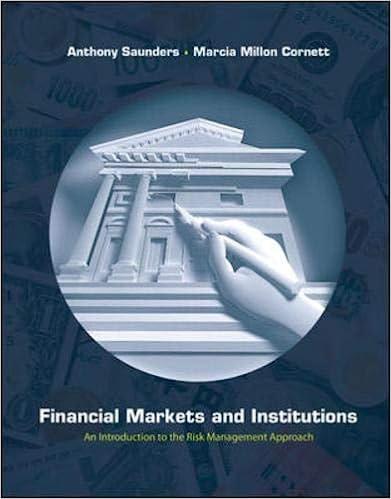Answered step by step
Verified Expert Solution
Question
1 Approved Answer
Fujita, Incorporated, has no debt outstanding and a total market value of $ 3 8 2 , 5 0 0 . Earnings before interest and
Fujita, Incorporated, has no debt outstanding and a total market value of $ Earnings before interest and taxes, EBIT, are
projected to be $ if economic conditions are normal. If there is strong expansion in the economy, then EBIT will be percent
higher. If there is a recession, then EBIT will be percent lower. The company is considering a $ debt issue with an interest
rate of percent. The proceeds will be used to repurchase shares of stock. There are currently shares outstanding. Ignore
taxes for questions a and b Assume the company has a markettobook ratio of and the stock price remains constant.
I suggest putting numbers into a spreadsheet so you can easily change numbers to calculate the answers required. I didn't
and just used a calculator and the "store" number feature, and after adjusting all of these numbers to derive answers, I
wished I used a spreadsheet instead.
Market value of equity shares outstanding price per share hmm do you need this info?
Since market value book value of equity a ratio of market to book this means that equity on the balance sheet is the
same as market value
ROE net income book value of equity
EBIT Interest EBT
tax rate net income remember the authors say to ignore taxes so assume the tax rate is zero for a and b but
remember taxes for c
Number of shares bought back with the recapitalization amount of debt issued price per share
Interests expense amount of debt issued interest rate
Percent change in ROE ROE under expansion or recession ROE in normal state NOTE: while this is the way the
authors like to calculate percentage change in ROE, normally if you are calculating percent change in a ratio a percent you
should simply take the ROE under the new state and subtract the ROE under the original state.
a Calculate return on equity, ROE, under each of the three economic scenarios before any debt is issued.
Note: Do not round intermediate calculations and enter your answers as a percent rounded to decimal places, eg
a Calculate the percentage changes in ROE when the economy expands or enters a recession.
Note: A negative answer should be indicated by a minus sign. Do not round intermediate calculations and enter your answers as a
percent rounded to decimal places, eg
b Assume the firm goes through with the proposed recapitalization. Calculate the return on equity, ROE, under each of the three
economic scenarios.
Note: Do not round intermediate calculations and enter your answers as a percent rounded to decimal places, eg
b Assume the firm goes through with the proposed recapitalization. Calculate the percentage changes in ROE when the economy
expands or enters a recession.
Note: A neative answer should be indicated bv a minus sian. Do not round intermediate calculations and enter vour answers as a

Step by Step Solution
There are 3 Steps involved in it
Step: 1

Get Instant Access to Expert-Tailored Solutions
See step-by-step solutions with expert insights and AI powered tools for academic success
Step: 2

Step: 3

Ace Your Homework with AI
Get the answers you need in no time with our AI-driven, step-by-step assistance
Get Started


